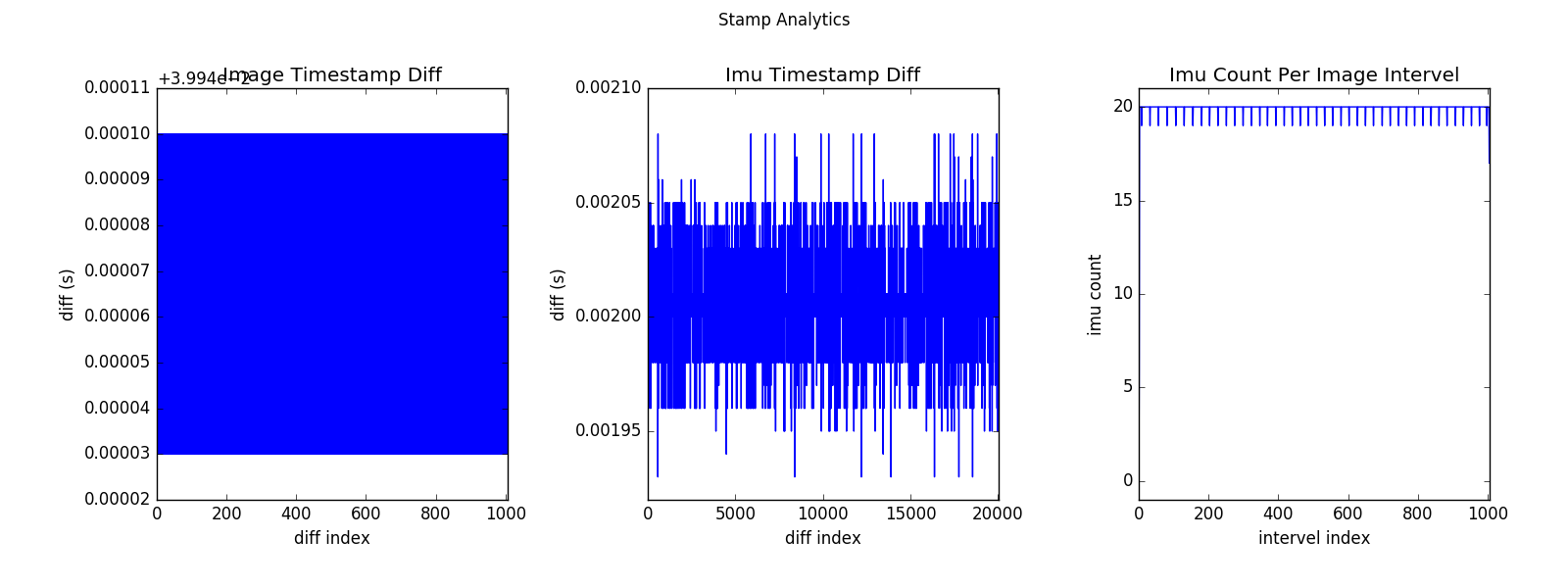Analyze time stamps¶
SDK provides a script for timestamp analysis stamp_analytics.py . Tool details are visible in tools/README.md .
Reference run commands and results on Linux:
$ python tools/analytics/stamp_analytics.py -i dataset -c tools/config/mynteye/mynteye_config.yaml
stamp analytics ...
input: dataset
outdir: dataset
open dataset ...
save to binary files ...
binimg: dataset/stamp_analytics_img.bin
binimu: dataset/stamp_analytics_imu.bin
img: 1007, imu: 20040
rate (Hz)
img: 25, imu: 500
sample period (s)
img: 0.04, imu: 0.002
diff count
imgs: 1007, imus: 20040
imgs_t_diff: 1006, imus_t_diff: 20039
diff where (factor=0.1)
imgs where diff > 0.04*1.1 (0)
imgs where diff < 0.04*0.9 (0)
imus where diff > 0.002*1.1 (0)
imus where diff < 0.002*0.9 (0)
image timestamp duplicates: 0
save figure to:
dataset/stamp_analytics.png
stamp analytics done
The analysis result graph will be saved in the dataset directory, as follows:

In addition, the script specific options can be executed -h to understand:
$ python tools/analytics/stamp_analytics.py -h
Tip
Suggestions when recording data sets record.cc annotation display image inside cv::imshow(), dataset.cc annotation display image inside cv::imwrite() . Because these operations are time-consuming, they can cause images to be discarded. In other words, consumption can’t keep up with production, so some images are discarded. GetStreamDatas() used in record.cc only caches the latest 4 images.